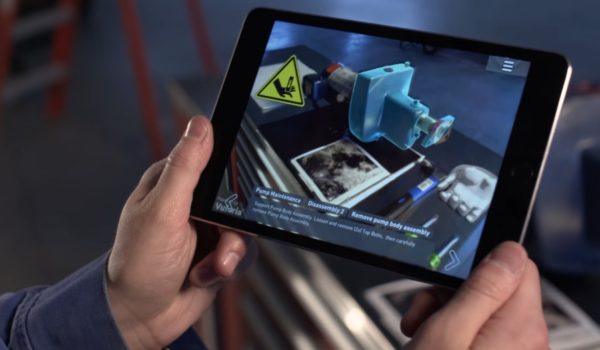Read original article here
Hypergrid Business: David Kariuki – February 28, 2020

Augmented Reality in Business Provides Critical Help During the Coronavirus Outbreak
Writing for Hypergrid, David Kariuki describes the importance of the ScopeAR WorkLink technology in a time where knowledge workers are forbidden to travel to China due to the dangers of COVID-19, and how augmented reality in business keeps stability and ensures safety while enabling critical business operations to be completed.
Kariuki points out that enterprises no longer have to be physically on-site in order to repair machines and ensure the normal flow of business operations. Rather, factory staff can contact an expert for help with a critical business process. But at that point, they don’t have to simply listen and follow instructions; rather, they use WorkLink from ScopeAR to receive detailed, actionable information on how to complete their task, even if they have no prior training in regards to machine repair. Think of it like an expert hovering next to you, over your shoulder, guiding you in real time how to complete an important repair or perform an important task. Images can also be employed with notes above them, providing important real-time information. The result is that factory operations continue without interruption, ensuring growth and revenue that would otherwise be lost as a result of the pandemic.
David Nedohin of ScopeAR told Kariuki that Chinese enterprises could potentially face millions of dollars in lost revenue as a result of the current environment, but the WorkLink platform ensures remote guidance and actionable instructions to factory workers and therefore helps organizations ensure normal business operations during an extraordinarily difficult time. The platform is also being used to join teams together virtually and help with key business fundamentals such as logistics, supply chains, and other strategies to ensure high-quality output.
Augmented Reality in Business ensures stability in a volatile environment
Augmented reality in business has other use cases as well: enterprises can publish best practice protocols and put them into a training module on the ScopeAR platform, creating a library that can be used on an ongoing basis. This is far superior to 2D instruction manuals and complex guidebooks. Nedohin compares the process to using video conferencing, but with augmented reality in business incorporated into the process. ScopeAR also offers metrics and monitoring to help organizations determine who is using the platform and how.
The article concludes by discussing some other key components of augmented reality in business: its ability to help during times of disaster by limiting access to the factory, and the increased ROI that Fortune 500 organizations have seen by adopting the technology. A headset that doesn’t require hands is considered a top priority, and will boost adoption of the technology tremendously. But for organizations that already recognize the incredible benefits that AR can offer, there are best practice tips for moving forward: finding an AR solution that aligns with their existing technology framework, choosing a platform that can be set up quickly, and then helping their staff understand the high-impact benefits of augmented reality in business.
